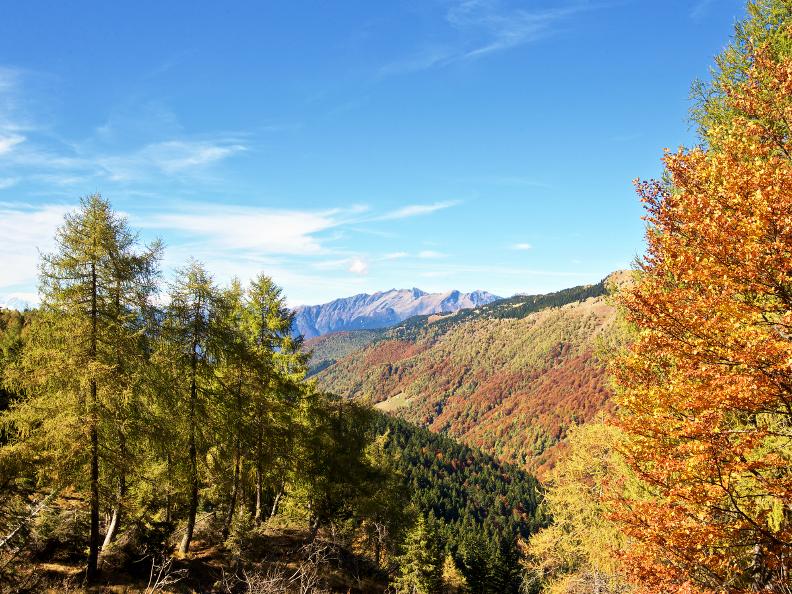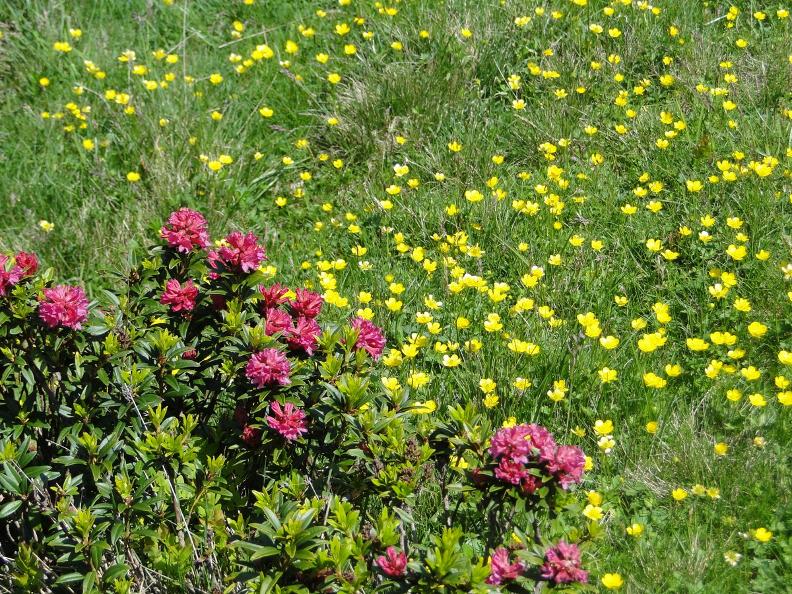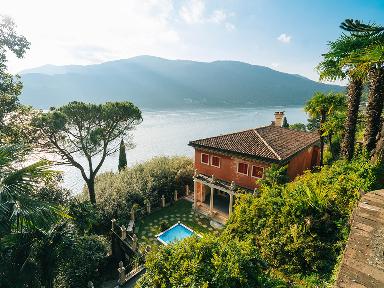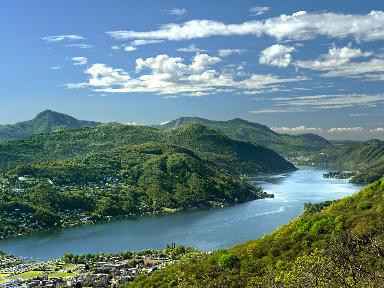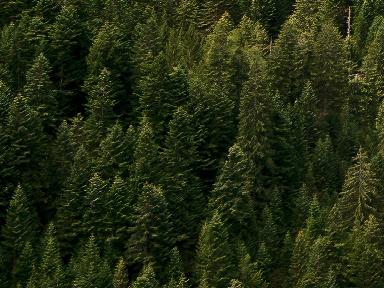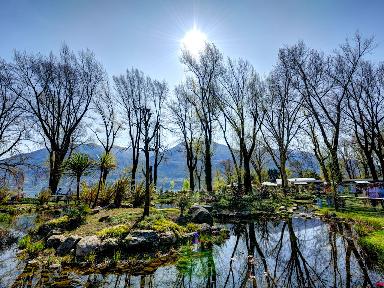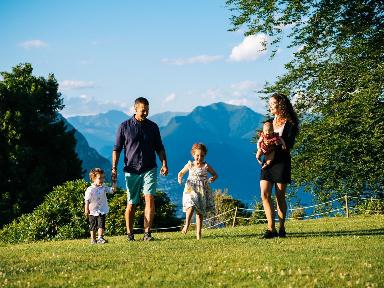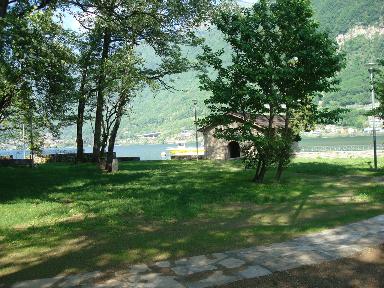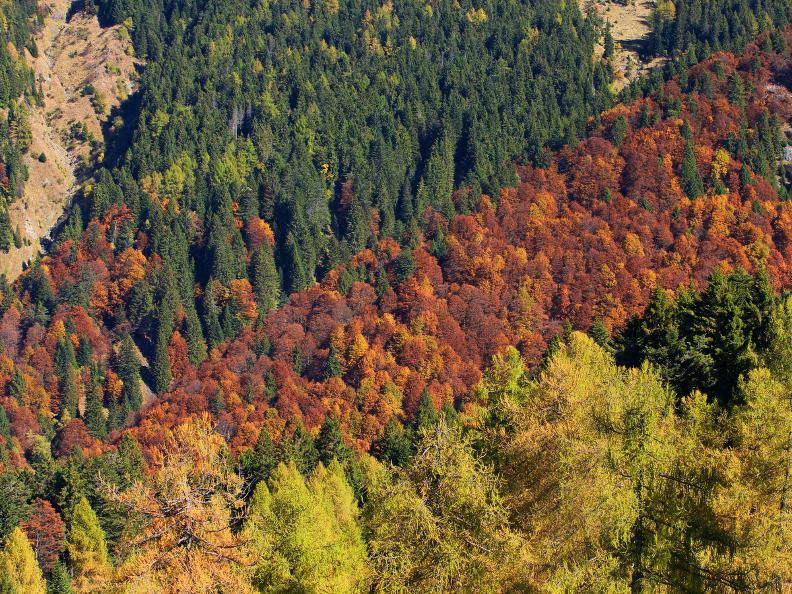
The district around the Camoghè occupies a position favourable to the growth of countless different plant species. For thousands of years, the Camoghè and Gazzirola area has been home to flora that has survived the climate changes that took place during the various ice ages. The Insubric-Piedmontese acid-loving vegetation is characterised by a large number of chestnut trees.
All the vegetation zones are represented here. The hill zone is dominated by chestnuts, oaks, limes, ashes and other deciduous trees typical of this area that extends up to around 800?1000 metres above sea level. The mountain zone rises to 1500?1600 metres above sea level and is dominated by beeches accompanied, in the cooler areas, by red firs and silver firs. In this zone, many of the abandoned pastures have been naturally taken over by the birch, a pioneer species that gradually prepares the ground for future definitive colonisation by the beech. At higher altitudes we find the subalpine zone with larch woods and pioneering clumps of rowan and green alder that grows right up to the edge of the tree line at around 1900?2000 metres above sea level. The Camoghè is home to a rare endemic species, the Androsace brevis, and various species of real naturalistic importance, such as Ranunculus glacialis, Nigritella nigra and Achillea clavenae, as well as others typical of the Alpine region.
The district has plenty of fauna to offer too, and with a little luck you may spot red deer, chamois, roe deer and wild boar, or at least see signs of them. The resident Golden Eagle in the Camoghè area is of great interest and nests here regularly. The ptarmigan, hazel grouse and black grouse are also worth a mention.
Photos: exploratorio.ch
Features
- PARKS AND GARDENS Natural parks
